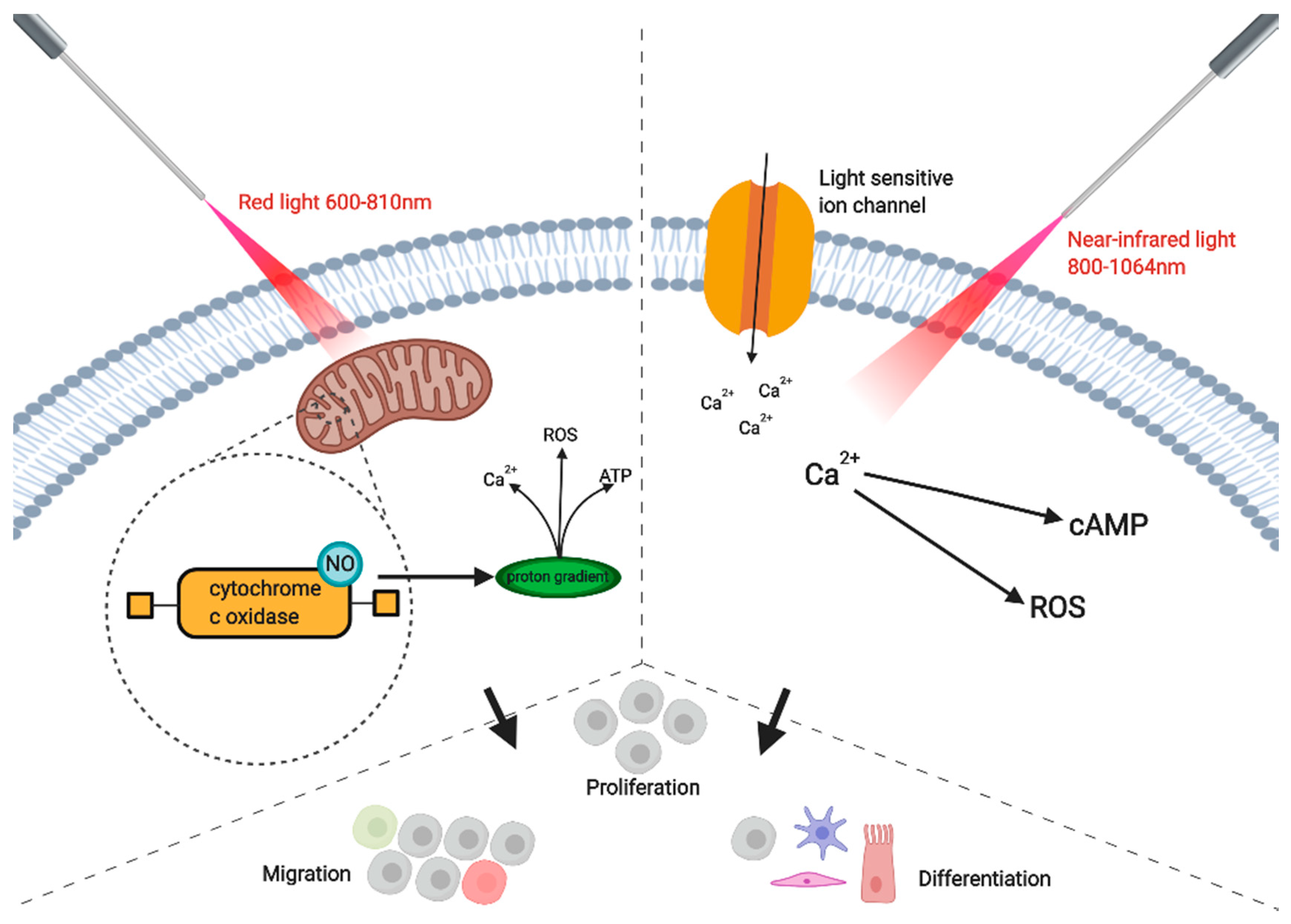The Single Strategy To Use For Photobiomodulation
Wiki Article
The Facts About Photobiomodulation Uncovered
Table of ContentsExcitement About PhotobiomodulationRumored Buzz on PhotobiomodulationNot known Details About Photobiomodulation The smart Trick of Photobiomodulation That Nobody is Discussing
Laser therapy is a medical treatment that makes use of focused light to boost a procedure called. During PBM, photons get in the cells and engage with the cytochrome c complicated within mitochondria. This interaction activates an organic waterfall of occasions that causes a boost in mobile metabolic rate, which can in addition to accelerate the healing procedure.There is agreement that the application of a therapeutic dosage of light to damaged or dysfunctional cells causes a cellular reaction moderated by mitochondrial mechanisms. Photobiomodulation. Studies have shown that these modifications can affect pain and swelling, in addition to, tissue repair service
Changes in ATP, reactive oxygen species and nitric oxide adhere to light absorption by Cc, O. These results are redox state and dose reliant. In hypoxic or otherwise stressed cells it has actually been revealed lot of times that complying with, nitric oxide is released, ATP is increased and oxidative stress is reduced [27-31]

The 3-Minute Rule for Photobiomodulation
PBM gadgets have actually been cleared for advertising by FDA through the Premarket Notification/510( k) procedure as adjunctive gadgets for the short-lived relief of pain. These clearances were based upon the presentation of clinical information to support such claims (Photobiomodulation). In this treatment, a light resource is placed near or touching the skin, enabling the light energy (photons) to pass through tissue where it connects with chromophores found in cells resulting in photophysical and photochemical adjustments that result in alterations at the molecular, mobile and tissue degrees of the bodySurprisingly, recent study indicates that light can boost performance in regular tissues and cells. The possible applications of PBMT are various and are being checked out experimentally at the basic scientific research, pre-clinical and scientific level. The existing professional uses are for the relief of discomfort and inflammation and the treatment of sports injuries.

The therapy criteria and variety of sessions needed for PBMT depend on place and cause. PBMT generally needs more than one treatment for optimal discomfort alleviation. It might take a number of treatments for the results to end up being noticeable. reports that it can take anywhere from eight to 30 sessions for a treatment to be fully effective, and some patients find it necessary to undergo treatment two to four times per week.
Photobiomodulation Can Be Fun For Everyone
Treatment criteria for PBMT were originally developed utilizing cells in vitro and in little pet models. These therapy criteria typically had a reduced irradiance and fluence and functioned well for cutaneous applications. When medical professionals started to use PBMT to treat frameworks that were situated deeper in the body, they used these parameters with negative outcomes.
We now comprehend that these negative research studies resulted from incorrect device and therapy criteria for transcutaneous therapy of much deeper structures. Recent developments in laser treatment tools and even more research into the suitable dosages have actually dramatically improved the results of PBMT. For treating deep tissues, the wavelength of light used figures out the deepness of infiltration right into a cells.
It is important that a clinician uses the proper wavelength of light and specifications to treat a problem. One wavelength and one collection of treatment parameters will certainly not be efficient for all problems. Adverse side impacts have not been reported from the usage of PBMT.
Some Known Facts About Photobiomodulation.
In the initial experiment, Dr. Endre Mester, used cut rats and observing how the laser impacted their capacity to grow hair compared to the team that was not receiving LLLT. He discovered that the team of mice getting LLLT had the ability to grow their hair back quicker than the team of computer mice that didn't get LLLT (Hoon C, et alia; 2012).This treatment is termed this way to separate the distinction in between the lasers some careers use to cut (eg. Low-level light treatment is painless, non-invasive treatment.
LLLT has a biphasic reaction, indicating that reduced dosages are usually attended be extra advantageous than higher doses. That being stated, doses higher or lower than the ideal dose doesn't impact (Hoon C, et al; 2012). Because of this, it can be difficult to navigate to these guys have studies on LLLT with a lot of criteria.
Some companies integrated the two (LED and laser) to you can try these out give a more all-round treatment because lasers can permeate much deeper than LED and infrared light (Norman Doidge, The Brain's Method of Healing, 2015). During therapy, the location that is being treated is revealed to LED light from a Biography, Flex Laser, which goes to 660 nm wavelength, complied with by infrared light at 830-840 nm wavelength.
Report this wiki page